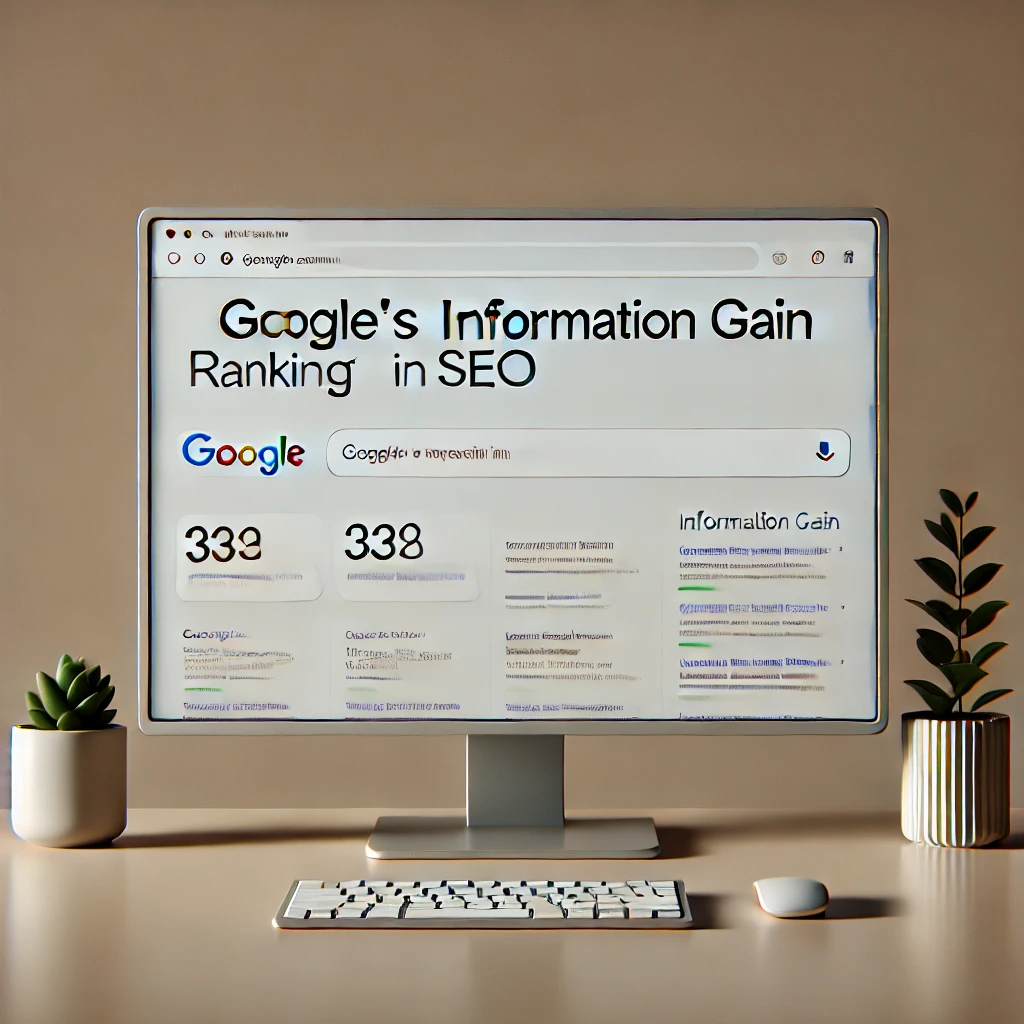Google constantly seeks to improve its search results by refining how it evaluates web pages. One recent development, the Information Gain patent, could change how Google ranks content by focusing on how much new, valuable information a page offers. In this post, we’ll break down what Information Gain means, how it works, and what you can do to create content that aligns with this new ranking factor.
Table of Contents
What Is Google’s Information Gain Patent?
The Information Gain patent introduces a new way for Google to assess content quality. Instead of only looking at keywords, backlinks, or page speed, Google now looks at how much unique, valuable information a page adds to what’s already available on the internet.
Imagine you’re writing about “how to grow indoor plants.” If there are hundreds of articles with the same basic information, Google might rank a page higher if it provides unique insights, data, or methods that haven’t been widely covered.
How Information Gain Works: A Simple Breakdown
According to the patent, here’s how Information Gain might work:
- Gather Existing Content: Google’s algorithm reviews existing content on a topic to understand what information is already available.
- Analyze New Content: When your page is published, Google compares its information to what’s already on other pages.
- Measure Information Gain: If your page provides new or unique insights that aren’t already widely available, it scores higher in Information Gain, which can positively impact its ranking.
In simple terms, Information Gain rewards fresh, original ideas or data that add value to the current content on the web.
Why Does Information Gain Matter?
With millions of articles covering the same topics, Google’s goal is to find and highlight pages that contribute something new and valuable. This approach is important for two reasons:
- Better User Experience: Users find it frustrating when search results repeat the same information. Information Gain helps Google show content that genuinely adds value.
- Encourages Quality Content Creation: This change could push content creators to prioritize unique insights over simply repeating popular trends.
How to Optimize Your Content for Information Gain
To align with Information Gain, focus on making your content unique, informative, and valuable. Here are some actionable tips:
1. Research What’s Already Out There
Before you create content, research what already exists. Use tools like Google Search, BuzzSumo, or Ahrefs to see the top-ranking pages for your topic. Take notes on common points covered and identify gaps where you could provide something new.
2. Add Unique Value
Offer something beyond what’s already available. Here are some ideas:
- Share Original Data: Conduct surveys, run experiments, or gather unique data that you can share in your post.
- Include Expert Opinions: Reach out to experts for quotes or insights that aren’t commonly available.
- Use Specific Examples: Add real-life examples or case studies to illustrate your points, especially if they’re from your experience.
3. Focus on In-Depth Information
Cover your topic in detail so that your page becomes a one-stop resource for users. Instead of listing basic tips, dig deeper by explaining the “how” and “why” behind each tip. For example, if writing about SEO strategies, break down complex concepts with examples and practical steps.
4. Keep Content Updated
Google considers outdated information to have low Information Gain. Regularly update your content to include the latest data, trends, and industry changes. This is especially important for topics that change over time, like SEO or digital marketing.
Examples of Content with High Information Gain
Here are some scenarios where a content piece could score high on Information Gain:
- Example 1: If writing about the benefits of intermittent fasting, include a case study or recent scientific study that hasn’t been widely covered. New data is often considered valuable for readers.
- Example 2: In a guide about “remote work productivity,” add a survey or poll of remote workers showing insights or trends. This makes your article unique and relevant.
Mistakes to Avoid
While optimizing for Information Gain, avoid these common pitfalls:
1. Rehashing Existing Information
Avoid copying or rephrasing content that’s already available. Information Gain specifically targets original contributions, so don’t rely on existing resources for your main points.
2. Ignoring Data Quality
Low-quality data or unsupported claims can hurt your content’s credibility. If you’re including statistics, cite reliable sources or conduct your own experiments to ensure accuracy.
3. Overloading Readers with Excessive Detail
While detailed content is valuable, avoid overloading readers with irrelevant information. Stick to insights that add true value and relevance to the topic.
Tools to Help You Find Unique Angles for Information Gain
Here are some useful tools to help you create content with high Information Gain:
- BuzzSumo: Research trending content topics and analyze how they’re covered.
- Ahrefs Content Explorer: See what’s ranking well and find potential content gaps.
- Google Trends: Discover emerging trends and incorporate them into your content.
Key Takeaways
- Unique Value: Focus on creating content that goes beyond common knowledge or popular points.
- In-Depth Coverage: Offer a comprehensive guide or resource to make your page more valuable.
- Regular Updates: Keep your content current to ensure it maintains high Information Gain.
Conclusion
Google’s Information Gain patent reflects a move towards content that’s truly valuable, insightful, and original. For SEOs and content creators, this means an opportunity to stand out by offering something genuinely unique and helpful. By following these guidelines, you can create content that ranks well and keeps users engaged.
The Information Gain approach aligns perfectly with Google’s mission to prioritize high-quality, user-focused content.
Here’s the latest version of the Information Gain patent

